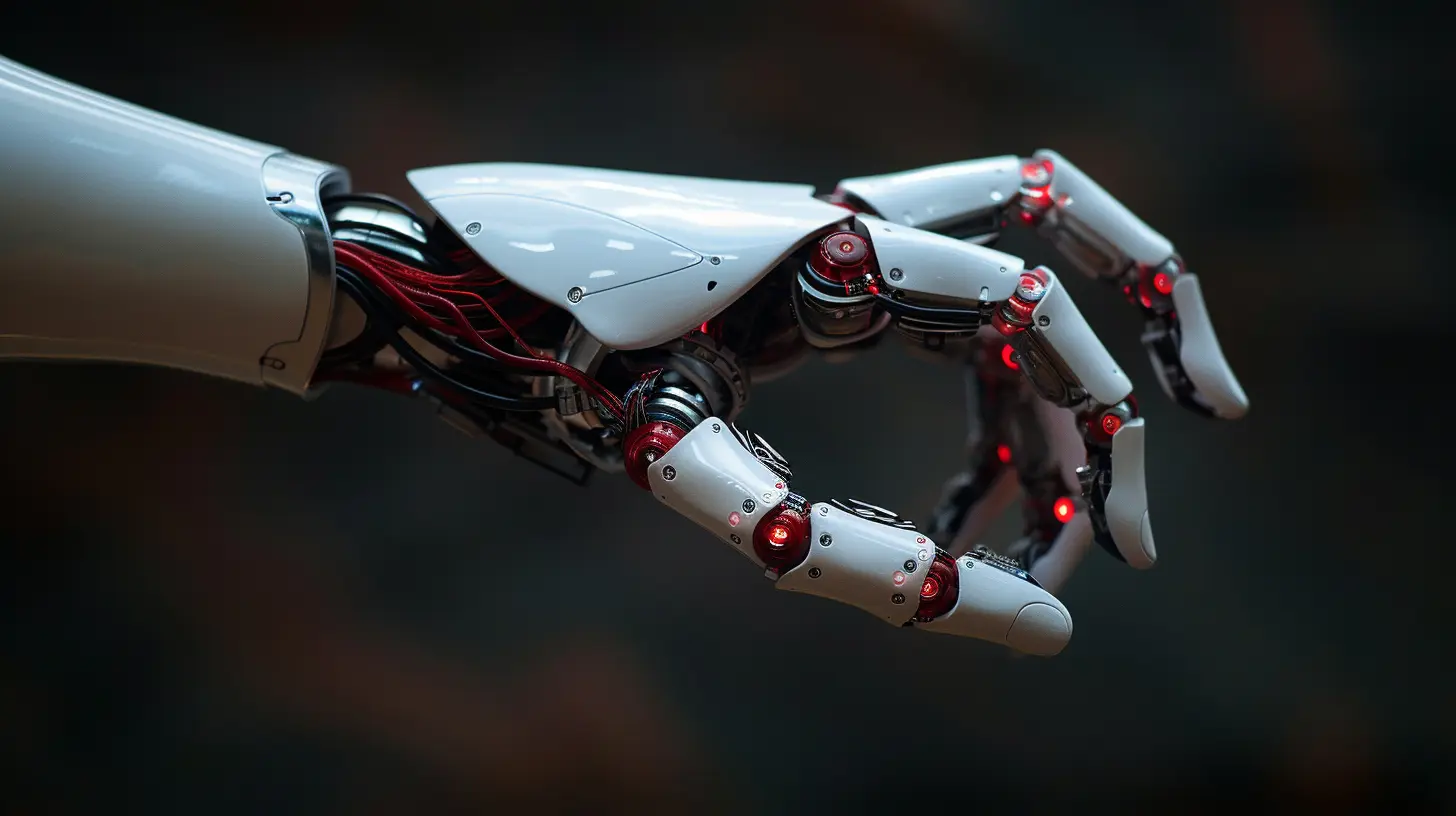The Impact of Edge AI on Consumer Electronics
31 October 2025
Look around your house — your smartphone, your smart speaker, maybe even your refrigerator — they’re not just connected devices anymore. They’re thinking devices. That's thanks to something called Edge AI. It’s reshaping how our gadgets behave, making them faster, smarter, and more personal than ever. But… what exactly is Edge AI? And how is it transforming the world of consumer electronics?
Well, buckle up. We’re diving deep into this game-changing tech — in a fun, easy-to-digest way. 😄
What is Edge AI? Let’s Break it Down
Edge AI is basically the secret sauce behind those lightning-fast, intelligent responses your devices are starting to deliver.Here’s the quick version:
Edge AI = Artificial Intelligence + Edge Computing
Instead of relying entirely on distant cloud servers, devices with Edge AI can process data locally, right there on the “edge” (meaning the device itself or close to it). Think of it like having a mini-brain in your gadget.
This changes EVERYTHING. Why? Because rather than waiting for data to go all the way to the cloud and back, the device can make decisions instantly. Like a self-reliant genius that doesn’t need to ask for help.
Why Edge AI Matters (And Why Now?)
You might be wondering: “Sure, that sounds cool, but why is this such a big deal now?”Well, we’re swimming in a sea of data. Your smart devices are constantly collecting it — from your voice, habits, movements, even facial expressions (yeah, it’s kind of wild). But as consumers demand more speed, personalization, and privacy, just collecting data isn’t enough. It needs to be processed fast and securely.
Cue Edge AI.
Here’s the real-world magic it brings:
- Real-Time Responses: No more latency or lag.
- Improved Privacy: Processing right on the device means less data going to the cloud.
- Lower Bandwidth Usage: Fewer data trips to the server saves bandwidth and costs.
- Smart Offline Functionality: Yep, intelligence without the need for constant internet.
In short — Edge AI is like giving your gadgets a brain transplant. 🧠
How Edge AI is Shaping Consumer Electronics
Okay, time to get into the juicy stuff. Let’s look at how this tech is transforming the very devices we use every day.1. Smartphones Just Got Smarter
If your phone can identify your face, filter photos by what's in them, or transcribe speech into text in real-time — that’s Edge AI flexing its muscles.Phones are now equipped with specialized AI chips (like Apple’s Neural Engine or Qualcomm’s Hexagon DSP). These chips let your phone:
- Run virtual assistants without needing the cloud.
- Improve images and videos instantly using AI-powered enhancements.
- Translate languages in real-time, even offline.
- Customize experiences just for you — predicting which apps you’ll need next or optimizing battery life based on your habits.
Basically, your phone’s not just smart. It’s intuitive.
2. Smart Home Devices Are Growing a Brain
Smart speakers like Alexa or Google Nest are learning to understand context better. With Edge AI:- Voice recognition becomes faster and more accurate.
- Devices respond even when the internet is spotty.
- Privacy is bolstered since your voice data doesn’t always leave your home.
And it’s not just speakers. We’re talking thermostats that learn your routines, lights that react to your mood, and cameras that recognize family members vs. strangers.
It’s like your home is developing a sixth sense.
3. Wearables Are Becoming Health Experts
Fitness trackers and smartwatches are no longer just step counters. Thanks to Edge AI, they’re analyzing complex biometric data right on your wrist.How cool is this? Your wearable can:
- Detect arrhythmias in your heartbeat.
- Predict potential health issues.
- Offer personalized fitness coaching.
- Track sleep and stress levels more accurately.
And it all happens in real-time. No need to ping a cloud database halfway across the globe. It’s your personal health assistant — 24/7.
4. Security Cameras are Turning Into Watchdogs
Traditional security cameras just record. New ones think.Edge AI-powered cameras:
- Recognize faces, license plates, or specific objects locally.
- Know the difference between a pet and an intruder.
- Send instant, smarter alerts (nobody wants “motion detected” for every leaf blowing by).
Less false alarms, more peace of mind.
5. Gaming Gets Ultra-Responsive
Gamers, rejoice! AI on edge devices means lower latency and smoother gameplay.Next-gen consoles and gaming hardware are using AI to:
- Enhance graphics in real-time.
- Predict player behavior for smarter NPCs.
- Process voice commands and gestures seamlessly.
It’s like your console is anticipating your moves before you even make them.
The Benefits of Edge AI in Plain English
Let’s pause and put the benefits into relatable terms:- Speed: Like switching from snail mail to instant texting.
- Privacy: Like whispering secrets to a friend instead of shouting them in public.
- Efficiency: Like cooking a meal at home instead of ordering out every time.
- Personalization: Like a barista who knows your order the moment you walk in.
In other words, Edge AI makes devices smarter for you.
Challenges? Of Course. It’s Not All Sunshine and Rainbows
Like any tech shift, Edge AI isn’t without its hiccups.- Cost: Building smarter devices with AI chips ain’t cheap.
- Power Consumption: AI tasks can be power-hungry, which is a challenge for battery-operated devices.
- Security Risks: While processing locally improves privacy, it also means the security of the device itself becomes critical.
- Development Complexity: Developers have to design AI to run on limited hardware — a whole different ballgame than cloud-based systems.
But the good news? These challenges are what drive innovation. Companies are already investing big in solving them.
The Future: Where is This All Headed?
So, what’s next? Here are some exciting predictions:- AI-Powered AR/VR Devices: Imagine smart glasses that understand what you're looking at and give you real-time info — without needing to connect to anything else.
- Smarter Appliances: Think ovens that recognize what you’re cooking and adjust settings automatically.
- Personalized In-Car Experiences: Cars that know your favorite routes, music, and even mood — and adapt on the fly.
- More Eco-Friendly Tech: With local processing, devices can run more efficiently, reduce emissions, and even work better off-grid.
We’re literally entering a world where consumer devices are becoming co-pilots in our daily lives — guiding, helping, and even protecting us, all without waiting for instructions.
Final Thoughts: Why You Should Care
Edge AI isn’t just some tech buzzword. It’s quietly powering a revolution in the gadgets you already use. It’s making tech more helpful, less intrusive, and way more personal.And guess what? This is just the beginning. The edge is where the next wave of smart tech is happening — and it’s going to be closer to you than ever. Like, literally in your pocket or on your wrist.
So next time your phone anticipates your next move or your smartwatch alerts you of a health anomaly, remember — that’s Edge AI at work.
And it’s only going to get smarter from here.
all images in this post were generated using AI tools
Category:
Technology InnovationAuthor:

Adeline Taylor
Discussion
rate this article
1 comments
Holly Jimenez
Edge AI: Making our gadgets smarter and our lives easier—finally, a tech upgrade we can all appreciate!
November 5, 2025 at 1:43 PM

Adeline Taylor
Thank you! Edge AI truly enhances user experience by enabling smarter, more responsive devices that cater to our daily needs.


